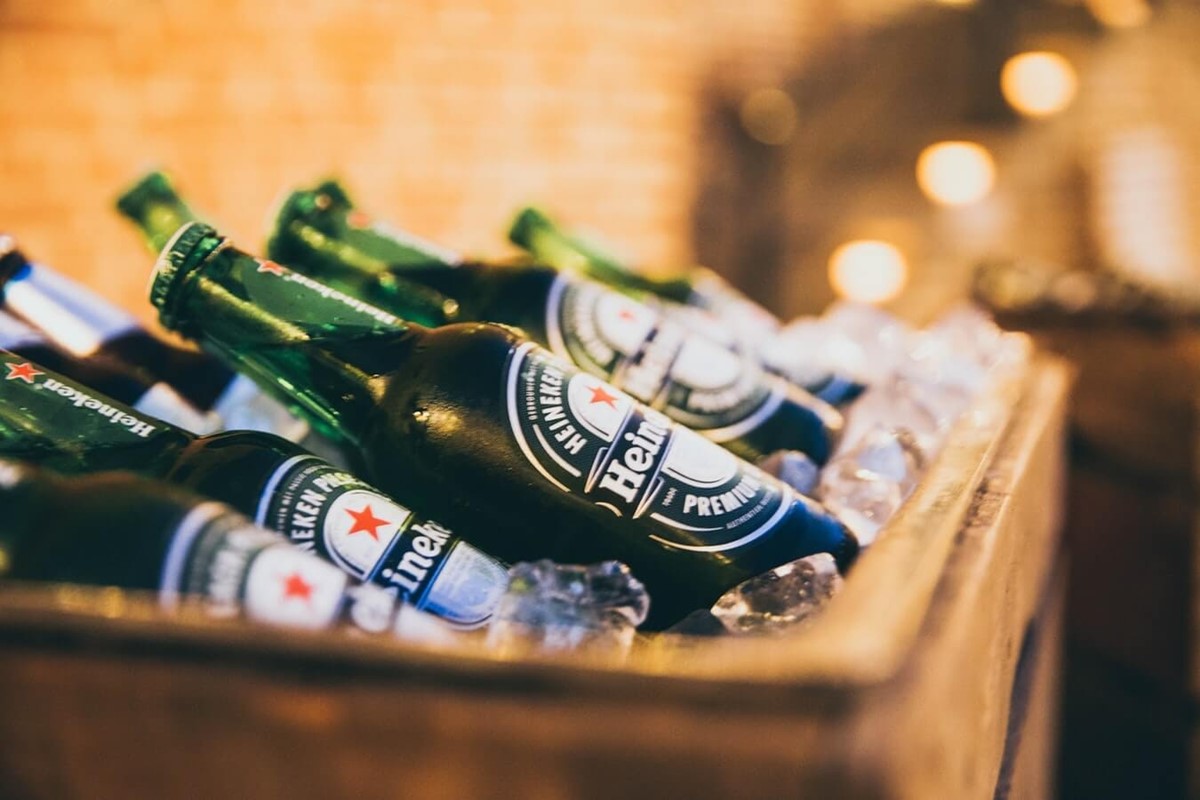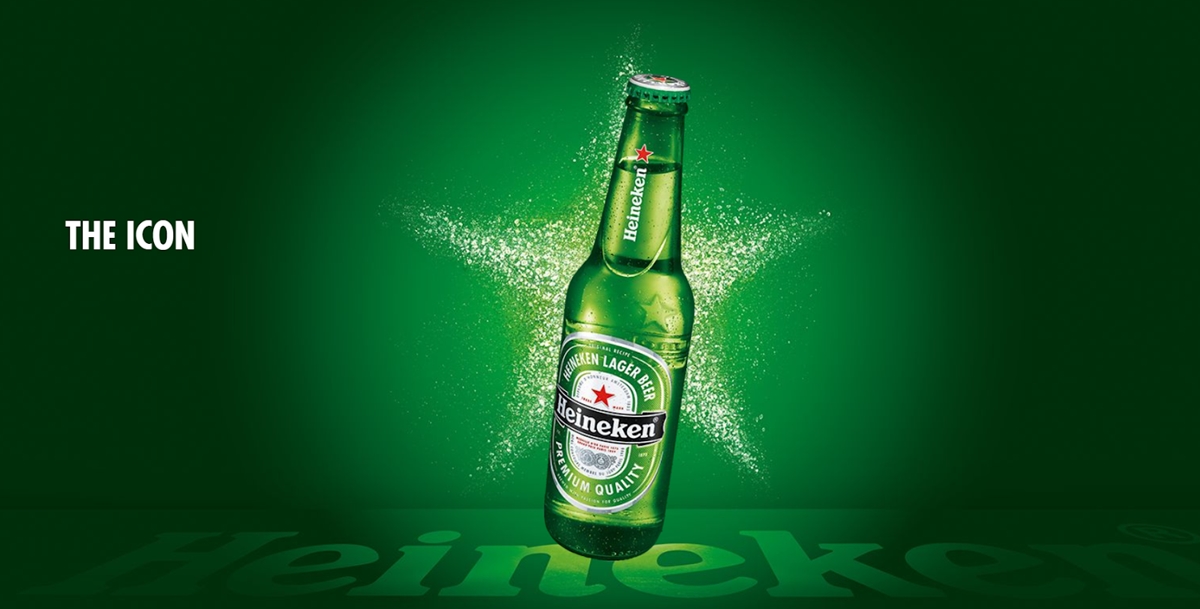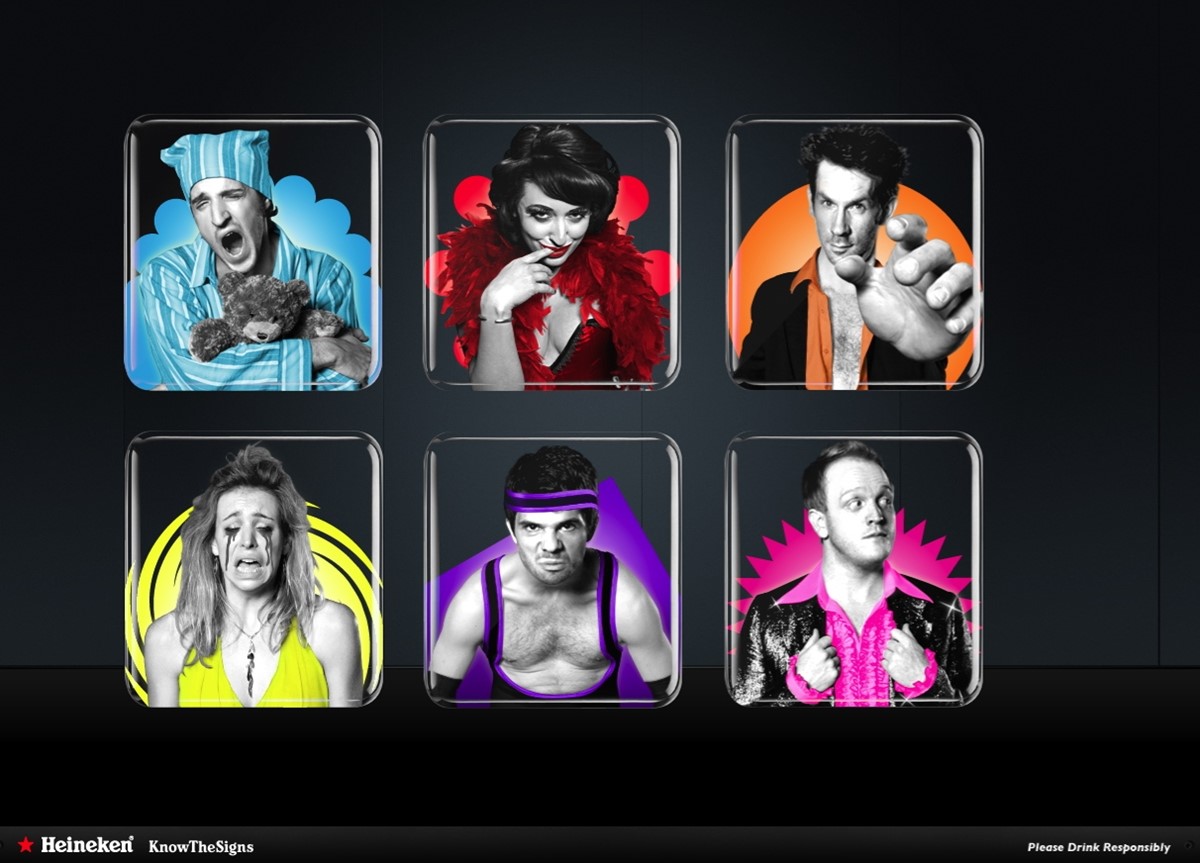Heineken Branding Strategy To Be The World's Top Beer Brand
Nowadays, Heineken is one of the most recognizable beer brands in the world. But it has come a long way, all the way from 1864 in Amsterdam. To me, I feel like it was just yesterday that I saw a refreshing Heineken advertisement on tv. It was enjoyable, memorable, and full of surprise. Even James Bond - the coolest spy in the world, was sipping from the infamous green bottle.
How did Heineken do it? What strategy did they use to make Heineken branding so popular? Why couldn’t other competitors like Guinness or Corona create the same magic? In this article, we are going to see the mystery behind Heineken branding and how the brand rose to the tops of the world. Let’s uncap a bottle and start.
Heineken introduction

The Heineken company was founded by 22-year-old Gerard Adriaan Heineken in 1864 in Amsterdam. As an ambitious young man, Gerard took a risk and decided to brew only lager, while the Dutch at that time were much better at brewing porter, ale, and brown. The decision paid off with a second Heineken brewery less than a decade later in Rotterdam.
That is the story of more than 150 years ago. Now, Heineken is operating in more than 190 countries all over the world with 300 global brands and 85,000+ employees. Various other cider brands are under operation by Heineken, such as Tiger Beer, Desperados, Sol, Strongbow, Bulmers, Old Mout and Blind Pig, and more.
In 2019, Heineken ranked #46 on Forbes’s list of global’s top regarded companies and rank #83 on the world’s most valuable brands. The brand has been valued at $28.3 billion in the same year (market capitalization value method), with sales estimated at $26.5 billion.
With the memorable tagline “Open your world”, Heineken beers are purchased and consumed by customers in bars, restaurants, and retailers globally.
Heineken branding strategy

As an international brand, the Heineken branding issue is to inspire but, at the same time, remain personally relevant and attached to the target customer’s personal cultures and origins. To stay as a premium brand worldwide, Heineken needs to be the pioneer on the premium segment and be viewed as a top-of-mind option.
Through the years, Heineken has made strong advertising efforts to communicate with the consumers that Heineken beer has high quality and superior tastes. Heineken also engages with customers through event sponsorships, making their brand associated with their favorite activities.
Here are the core elements of the Heineken branding strategy.
Brand identity

A brand identity is the visible elements of a brand, such as color, logo, and design. It is what identifies and differentiates the brand in consumer’s minds. To Heineken, the brand identity has to communicate and reinforce the long-lasting heritage and authenticity of a top brewer company.
For a long time, the Heineken logo has been known for the red star on a green bottle. What you might not know is that the three ‘e’ on the logo were slightly tilted backward, making them look like smiling faces. This suits a fun and entertaining beverage, which was not available in the original label.
Through time, elements were removed from the logo to reach a more minimalistic and centralized design. Now, you will see the Heineken logo with only the name and a part of the red star. These are considered the fixed elements. But the characteristics that the logo represents remain unchanged.
Visual elements that link the Heineken brand are always related to exploration, dynamism, open-mindedness, celebration, and connection. This is directly related to Heineken’s mission statement: “To delight customers, day in day out, with perfect cider and beer brand experiences.”
So whenever consumers see the red star on a green bottle, they know it is a fun ride.
Brand positioning

The alcoholic beverages market for Beer is estimated to earn a revenue amount of $615,933 million in 2020. While Budweiser is considered the most valuable beer brand, Heineken comes close to second. To keep being a major player and even rise to the top one, Heineken needs to position itself well to stand out from the competition.
Generally speaking, Heineken’s target consumer is men in the age of 20-35 years old. This is why the beer brand continues to position its products as drinks for friends, good times, and coming together. It is the approach to internationalism, in that Heineken is for everyone and excludes nobody.
In their own words on the website, they are committed to ‘delivering great shared moments to consumers all over the world’.
Their marketing activities strive to depict groups of people in social settings, like at bars, pubs, or in the home, while Heineken branding retains the communal touch. Heineken can also be seen at many sporting events like football, formula 1, rugby, with creative outdoor banners.
While ads usually feature closely connected social groups, once in a while, Heineken renews their image with ads about making new friendships or creating bonds. For example, in 2017, the brand paired up strangers with opposing views in the video “Worlds Apart: An experiment”.
In combination with traditional marketing channels such as TV spots and events, new digital connections are being developed to connect with young consumers and reinforce the unique positioning of Heineken branding:
- The brand has significant places in two key cultural spaces of young adults - sport and music - and presence in film as well.
- They work closely with some of the world’s biggest right holders to earn major sponsorship.
- Heineken has a sustainable strategy to make a positive contribution to the environment, communities, and society.
- Their event has both offline and online marketing to bring people together and really “enjoying good times”
With a great focus and innovation in the brand positioning over years, Heineken can drive image, increase customer loyalty, and gain commercial success.
Brand value

Every brand has a specific archetype that represents all of its values. You can find Heinekend’s long standing values right on their “Who we are” site: Passion for quality, Enjoyment of Life, and Respect for people and the planet. To do this, their archetype needs to be entertaining, playful, yet still admirable. We can call this “The Magician”.
Heineken’s advertisement often demonstrates a lively and confident style through appealing humor. Just like a magician, Heineken products develop a vision of becoming desirable and loved by the people around, and achieve it in an entertaining way. Their lifestyle framework is about progressing beyond one’s own borders, by reaching out to new personalities and cultures.
Two more values that I would like to add to Heineken’s values are the Code of business ethics, and Enjoy responsibly. Being a world’s leading brewer, Heineken always informs consumers that they should enjoy a beer in moderation. Their ads and activities have implemented a consistent, effective approach to discourage abuse of alcohol and encourage responsible attitudes.
By actively supporting the reduction of harmful drinking, Heineken branding value is elevated and becomes even more loved.
Prime examples of Heineken branding marketing
To stay at the top, you need to do things differently. Heineken has mastered this well by combining traditional and digital marketing to deliver creative ideas. Their campaigns not only promote the top premium beer, but also suit local tastes and develop the branding strategy to a higher level.
Here are some of the most significant successful campaigns made by Heineken. One thing in common, they all have a good twist.
Know the Signs - Enjoy responsibly

Due to bad effects on behaviors, many governments have restricted how beer companies can promote their products. Heineken quickly catches this and promotes a responsible drinking culture. In 2009, the brand launched its first worldwide internet campaign called “Know the Signs”, followed by activities to raise awareness of responsible alcohol consumption.
They created a website so people could look out for signs of people who were transforming into horrible versions of drinkers: the sleeper, the fighter, the groper, the exhibitionist, and the cryer. Once users spot these types, they are provided with information and alternative realities of how responsible drinking could make the night better.
The campaign is also interactive between friends. Visitors can assign friends to each type, send a virtual glass of water, and add their friends’ faces into one of the characters. It was not only entertaining, but also raised awareness effectively.
The beer brand also displayed an “Enjoy Heineken Responsibly” tagline right on promotional boards during soccer matches of the Champion League. This drew over 850 million television viewers every week on one of Heineken’s main sponsorship platforms.
Open your world - Reaching out to people

Mentioned above, “Worlds Apart: An Experiment” was released in 2017. The video was a social experiment that featured pairs of people with opposing beliefs in women’s rights, climate change, and transgender. They were asked to finish building a bar together with some revealing questions along the process.
Upon the end, they were given the option whether to continue their discussion over a bottle of beer, or just leave. Every pair decided to sit down and kept the conversation, with a bottle of Heineken. It was heart-warming, entertaining, and still remains true to the brand value.
The video was a huge success with over 14.5 million views on YouTube. Many presses gave high praise for the ads as well for delivering positive messages in a time of many conflicts.
Share the sofa - Innovative and engaging

Heineken created the “Share the sofa” campaign exclusively for the Champions League as a primary sponsor. Based of the insight that 76% of people watch the football league alone on their sofas at home with tablets and phones, Heineken invited people to watch matches together with star players like Owen Hargreaves, Fernando Morientes, Nistelrooy, Ruud Gullit right at place.
During the games, fans could send questions via Twitter and chatted with these players like close friends. As the players answered, dancers and characters on set made the answers come to lives. The brand also created reaction videos, pro insights, and funny reactions; all were broadcasted in real time.
By combining one of the top sport events with digital technology, the campaign generated more than 1 billion media impressions in 94 countries. It also reached 13.4 million Tweets every game. And the best? It increased consumers’ purchase intent by 7% just by interacting.
What you can learn from Heineken
The world is changing fast with consumers demanding more and more personalized products as well as experience. To stay as the top in almost 150 years, Heineken had to continually innovate their branding marketing strategies, while maintaining a consistent value image. The brand carefully crafted their campaigns to deliver worth-sharing messages, boost brand awareness, and keep the brand’s position as a world’s top beer brand.
What are you going to apply that information to your own brand? Do you see your company 150 years into the future? How are you going to achieve such success like Heineken branding? Share your thoughts with me in the comment section below.
More Stories Like Heineken:
New Posts






